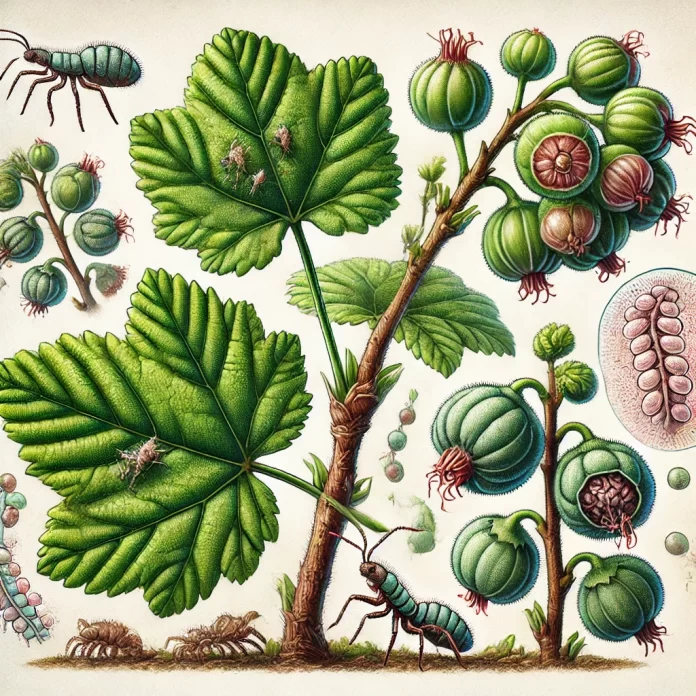Big Bud – A Plant Disorder
Overview
Big Bud is a physiological and pest-related disorder affecting various plants, particularly blackcurrants (Ribes nigrum), tomatoes (Solanum lycopersicum), and some other fruiting crops. It is characterized by the abnormal swelling of buds, leading to poor flowering and reduced fruit production. The condition is most commonly caused by infestations of eriophyid mites, such as the blackcurrant gall mite (Cecidophyopsis ribis), but can also be linked to hormonal imbalances and environmental stress.
Symptoms
- Swollen, distorted buds that fail to develop normally
- Buds appear rounded and enlarged compared to healthy ones
- Failure of affected buds to produce flowers or leaves in the following season
- Stunted growth and reduced fruit yield in severe infestations
- Presence of microscopic eriophyid mites within the affected buds
Causes
- Eriophyid Mite Infestation
- The most common cause, particularly in blackcurrants.
- Mites feed on developing buds, injecting toxic saliva that causes the tissue to swell and deform.
- Affected buds may eventually die without opening.
- Nutrient Imbalances
- Excess nitrogen can lead to abnormal bud development.
- Deficiencies in calcium, boron, or magnesium may contribute to poor bud formation.
- Hormonal Disruptions
- Imbalances in auxins and cytokinins can cause irregular bud growth.
- Environmental factors, such as unseasonal warmth during dormancy, may trigger bud abnormalities.
- Fungal & Viral Associations
- Some cases of big bud are linked to reversion disease, a viral condition transmitted by gall mites, which affects blackcurrants.
- Secondary fungal infections can occur in weakened plants.
Affected Plants
- Blackcurrants (Ribes nigrum) – Most commonly affected, leading to reduced fruit yield and susceptibility to reversion disease.
- Tomatoes (Solanum lycopersicum) – Large, misshapen flower buds, often failing to set fruit, can be caused by excessive nitrogen or temperature fluctuations.
- Other fruiting crops – Similar symptoms may occur in gooseberries, grapes, and citrus under specific conditions.
Prevention & Management
- Pruning & Sanitation:
- Remove and destroy affected buds in late winter before mites spread.
- Avoid composting infested material to prevent reinfestation.
- Mite Control:
- Apply sulfur-based or predatory mite treatments in early spring.
- Avoid broad-spectrum insecticides, which can disrupt beneficial predatory mites.
- Nutrient Management:
- Maintain balanced fertilization, avoiding excessive nitrogen.
- Ensure adequate micronutrient levels, particularly boron and calcium.
- Resistant Cultivars:
- Plant mite-resistant blackcurrant varieties, such as ‘Ben Hope’ and ‘Ben Gairn.’
- Environmental Control:
- Promote good air circulation to reduce humidity, discouraging mite activity.
- Avoid overfeeding with nitrogen-rich fertilizers, particularly in tomatoes.
Impact on Crop Yield
Severe infestations can drastically reduce flowering and fruiting, leading to significant economic losses in commercial fruit production. Long-term infestations may weaken plants, making them more susceptible to secondary infections and environmental stress.
hortic




